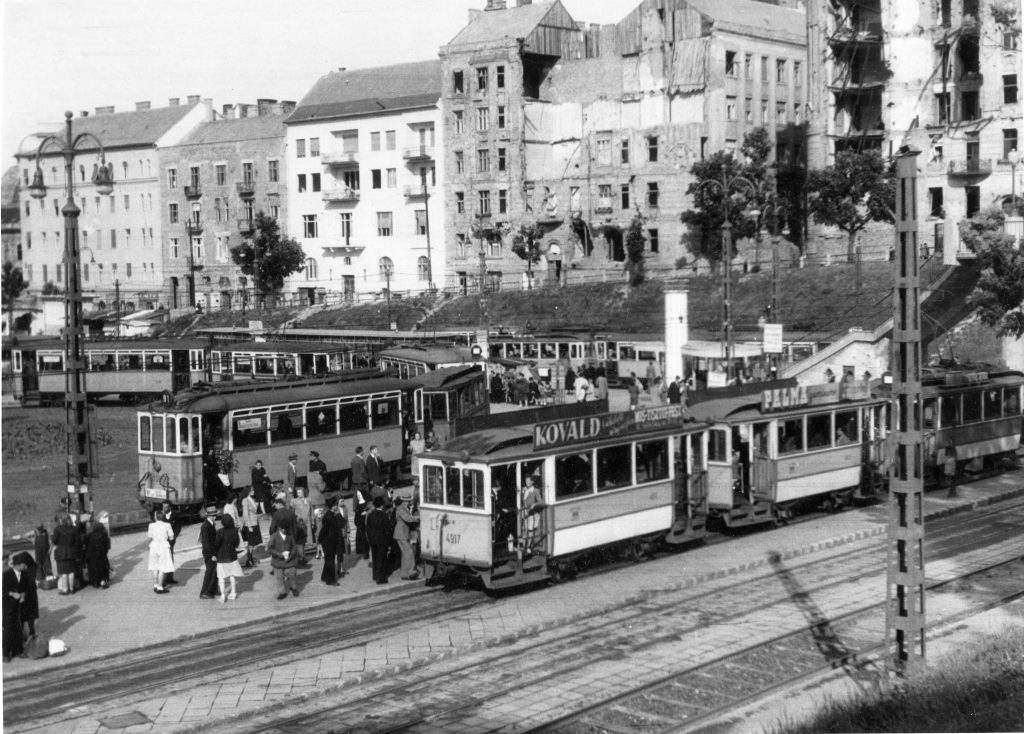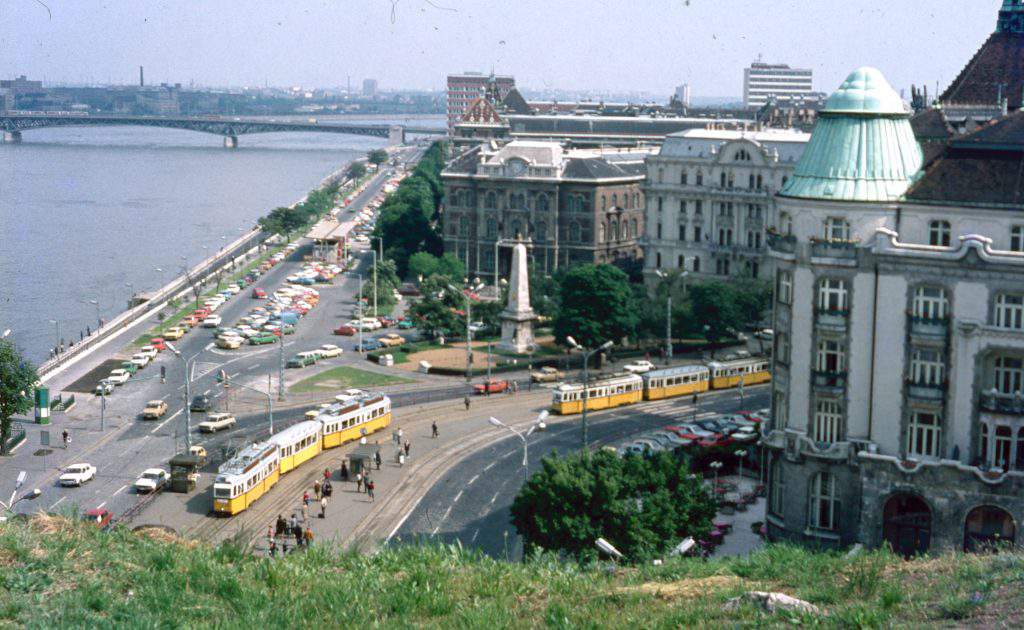The 130 years of trams in Budapest

The tram network in Budapest was one of the first of its kind in Europe, as Zoom.hu highlighted. It is still functioning, celebrating its 130th birthday today. But how did this type of transport develop during more than one and a quarter centuries? Let us take a ride on the tram of time.
The very first tram in Budapest began operating at 2:30 pm on 28 November 1887. It was travelling between the Nyugati railway station and Király Street. It was seven years after the first tram in the world was inaugurated in 1881 in Gross-Lichterfelde, Germany. The first tram rake in Budapest was produced by Siemens-Halske.
The tram was designed for functioning in the summer first: it’s structure was open and they were equipped with furnaces.
The blue and green rake was travelling on a one-kilometer-long track with only one platform, and its speed was limited to 10 km/h. It could proceed through Oktogon only very slowly. The cables were installed below the rakes first, to avoid hanging them over the streets. This method was used in Budapest until 1924.

The first normal track — that’s gauge was 1,435 millimeters long — was finished on 30 June 1889 by BVVV (Budapest Electric City Trains). It was travelling from the Egyetem Square through Kecskemét Street, Kálvin Square, Baross Street (which was called “Stáció” at that time) to Orczy Square. A tram was also going through Podmaniczky Street later. BVVV replaced the test railways on Nagykörút with a line with normal gauge. This was later extended to the Kerepesi Street and the Üllői Street.
Budapest Road Rail Company (BKVT) began to replace horse railways with electric ones from 1894 on, because feeding the horses cost more than electricity. The last horse railway was removed in 1898.
The rival companies built a connected tram network: BKVT owned the odd numbered lines, while BVVV owned the ones with even numbers.
The constant struggle of the two executors resulted in the imprudent development of the network. They were united in 1918 on the name of United City Railways (BEVV). Budapest Capital Transport Co (BSZKRT) was established in 1923 through the unification of BEVV and the bus industry.
After World War II, the pre-war state of the network was restored relatively well. As the construction of the first metro line was delayed by almost two decades, the tram network became overloaded. The Ganz factory upgraded the outdated rakes with UV trams, first of which began functioning in April 1956.

Budapest Transport Privately Held Corporation (BKV) was founded in 1968, and it purchased Czech Tartra T5C5 type trams, which were replaced by German models in 2001.
The last UV tram was removed on 20 August 2007 after five decades of operation.
Travelling by tram had been the dominant means of public transport until 1970, but it was later taken over by the two new metro lines. The Hungarian Ganz articulated trams were replaced by Siemens’ Combino Supra models in 2006. They used to be the longest trams with one room: their length reached 54 meters. This record was beaten by CAF Urbos trams in 2016, which were longer by two meters and were placed on tram line 1.
The network was further developed in the 1980s and ‘90s with the extension of tram line 1, which reached Rákóczi Bridge by the beginning of the new millennium. It was further extended to Fehérvári Street in 2014-2015.
The most recent extension is under construction right now: it will reach Etele Square and will probably be finished in 2018.
Photo: Fortepan.hu
Source: Zoom.hu






Such a beautiful station and now looks like ruins 🙁 Trams still almost the same…